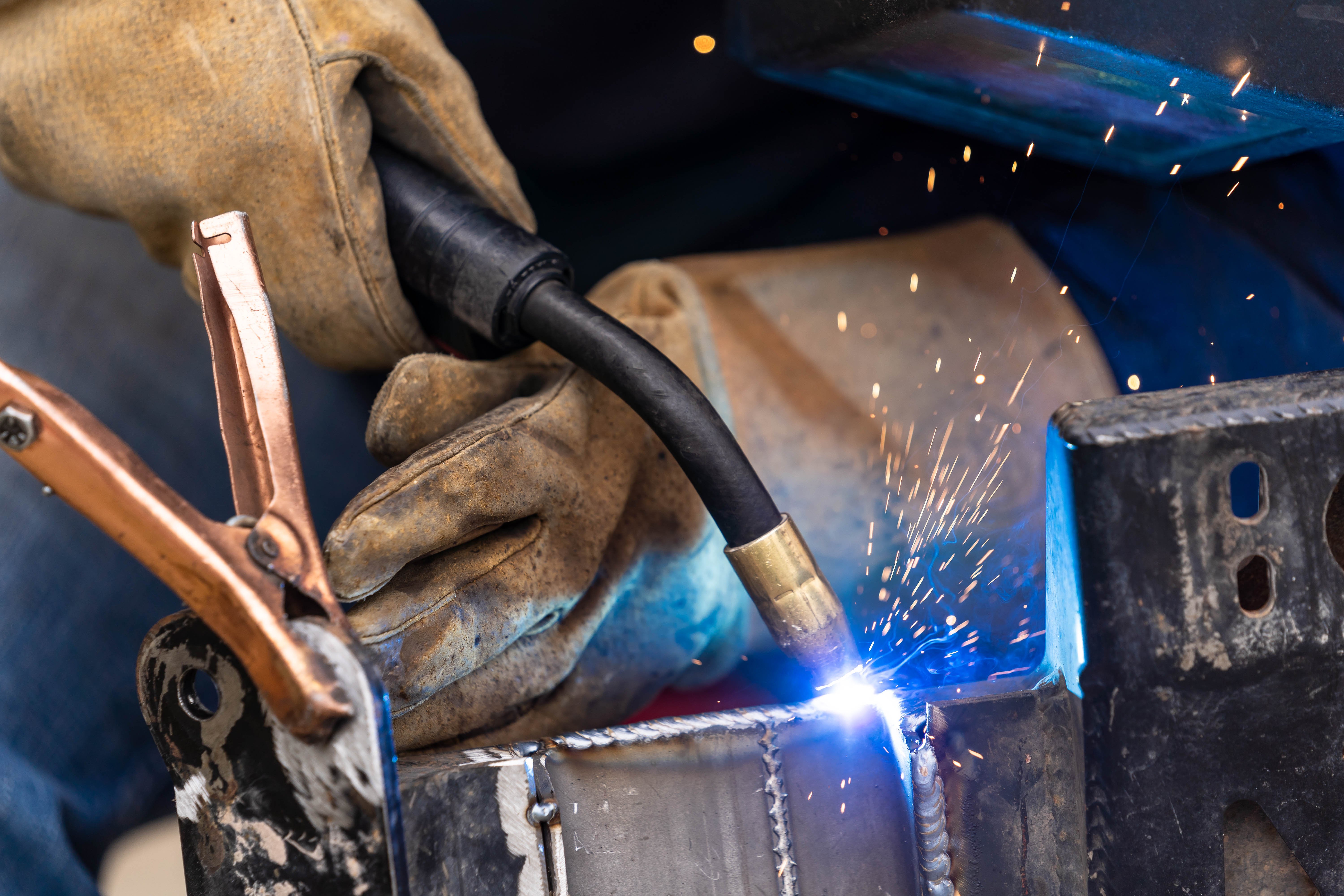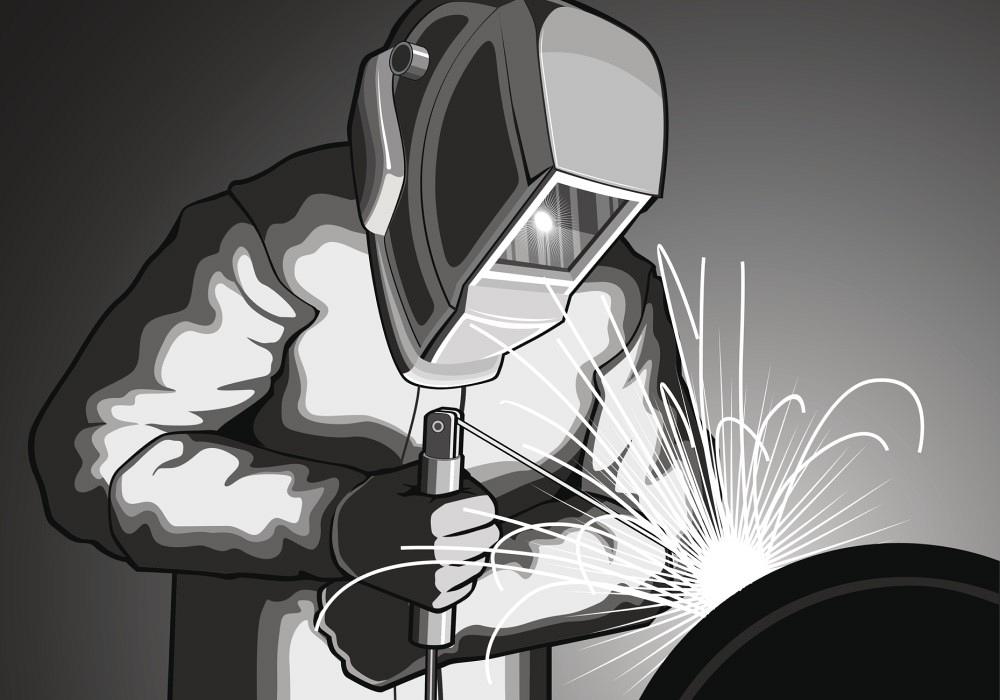Usual Welding Repair Work Issues and How to Address Them Properly
Welding repairs typically experience a variety of problems that can endanger the stability of the end product. Usual problems include insufficient infiltration, porosity, and imbalance, to name a few. Each issue offers special obstacles that need certain techniques for resolution. Understanding these issues is crucial for welders aiming to enhance their skills and results. This conversation will certainly explore these usual welding repair problems and reliable techniques to address them.
Poor Infiltration
Poor infiltration occurs when the weld metal stops working to completely fuse with the base product, causing weak joints and prospective structural failures. This issue commonly comes from insufficient warmth input, inaccurate electrode angle, or improper welding rate. Welders may encounter poor penetration because of a miscalculation of the necessary criteria for a certain product density or type. Furthermore, contamination on the base product's surface can impede effective bonding, intensifying the issue. To deal with insufficient infiltration, welders need to ensure appropriate setups on their tools and preserve a clean job surface. Routine assessment of welds is suggested to recognize any deficiencies early, allowing for prompt adjustments and the prevention of compromised architectural stability in welded settings up.
Porosity
Porosity is a common defect in welded joints that materializes as tiny gas bubbles entraped within the weld metal. This issue can endanger the integrity of the weld, bring about reduced stamina and prospective failure under stress. Montana Mobile Welding and Repair Welding. Porosity commonly emerges from contamination, moisture, or incorrect welding strategies, which allow gases to escape right into the molten weld pool. To resolve porosity, welders should guarantee proper surface area preparation, maintain a clean workplace, and use ideal welding specifications. Furthermore, selecting the ideal filler product and shielding gas can mitigate gas entrapment. Normal assessment and screening of welds can help determine porosity early, assuring prompt restorative actions are taken, thus protecting the top quality and integrity of the bonded structure
Misalignment
Imbalance in welding can emerge from various variables, consisting of inappropriate configuration and thermal growth. Comprehending the origin is necessary for efficient resolution. A number of improvement methods are readily available to straighten parts and assure architectural stability.
Root causes of Imbalance
Welding imbalance commonly originates from a variety of underlying problems that can endanger architectural integrity. One primary cause is incorrect fit-up of parts before welding, which can bring about gaps and irregular surfaces. Variants in thermal growth throughout the welding procedure can likewise lead to distortion, particularly if the products being joined have various coefficients of growth. Additionally, inadequate securing and fixturing might fall short to hold parts safely in place, bring about movement throughout welding. Inadequately kept equipment, including welding machines and tools, may introduce inconsistencies in the weld grain, more adding to imbalance. Driver error, stemming from inadequate training or experience, can additionally play a considerable role in creating misaligned welds.

Adjustment Methods Offered
Resolving imbalance successfully calls for a mix of restorative techniques tailored to the certain issues handy. One common method is the usage of components or jigs to hold components in the appropriate setting throughout welding, ensuring constant positioning. Additionally, pre-heating the products can help in reducing distortion and enhance fit-up. For considerable misalignment, mechanical adjustment techniques, such as making use of hydraulic jacks or clamps, can be used to correct the position before welding. Post-weld heat treatment might likewise be needed to ease stresses created by imbalance. Cautious evaluation and change during the arrangement stage can prevent misalignment issues from ending up being significant troubles, advertising a smoother welding procedure and boosting total architectural honesty.
Distortion
Distortion is a common difficulty in welding that can occur from different aspects, consisting of unequal heating & cooling. Recognizing the sources of distortion is vital for implementing effective avoidance strategies. Addressing this issue not just boosts architectural honesty yet additionally enhances the general top quality of the weld.
Sources of Distortion
When based on the extreme heat of welding, materials typically undertake changes that can bring about distortion. This phenomenon mostly arises from thermal expansion and tightening during the welding process. As the weld location warms up, the product increases; upon air conditioning, it acquires, which can produce inner stress and anxieties. On top of that, unequal home heating across a workpiece can aggravate these tensions, causing warping or bending. The kind of material likewise plays a significant duty; metals with differing thermal conductivity and coefficients of expansion might respond differently, causing unpredictable distortions. In addition, bad joint design and inadequate fixturing can add to imbalance throughout welding, raising the chance of distortion. Recognizing these causes is necessary for effective welding repair work and avoidance methods.
Prevention Techniques
Effective prevention strategies for distortion throughout welding emphasis on regulating heat input and making sure proper joint layout. Keeping a constant warm input assists to reduce thermal development and tightening, which can cause distortion. Making use of strategies such as pre-heating the work surface can also decrease the temperature slope, advertising uniform home heating. Additionally, selecting proper joint designs, such as T-joints or lap joints, can enhance stability and reduce anxiety focus. Implementing correct fixturing to protect the work surfaces in place additionally help in maintaining alignment throughout the welding procedure. Staggered welding sequences can distribute warm more equally, protecting against local distortion. By using these methods, welders can greatly reduce the chance of distortion and boost the overall high quality of their welds.
Breaking
Fracturing is a common concern come across in welding repair services, frequently arising from numerous variables such as inappropriate cooling rates, material choice, or poor joint preparation. The event of fractures can significantly jeopardize the stability of the weld, causing possible failings throughout operation. To resolve this problem, welders should initially assess the source, making certain that materials are compatible and suitably chosen for the details important site application. Furthermore, controlling the cooling price throughout the welding process is important; rapid air conditioning can cause stress and bring about breaking. Appropriate joint layout and preparation also contribute to minimizing the risk. Applying these techniques can enhance weld top quality and toughness, inevitably lowering the probability of fracturing in completed weldments.

Insufficient Combination
A considerable problem in welding repair services is incomplete blend, which occurs when the weld steel does not appropriately bond with the base material or previous weld passes - Welding. This issue can result in weaknesses in the joint, possibly endangering the stability of the bonded framework. Variables adding to insufficient blend include insufficient warmth input, inappropriate welding technique, and contamination of the surface areas being signed up with. To resolve this concern efficiently, welders must ensure proper pre-weld cleaning and surface prep work, in addition to adjust their welding criteria to accomplish sufficient penetration and combination. Routine assessment during the welding process can additionally help determine insufficient blend early, enabling timely rehabilitative measures to improve the general high quality of the weld
Overheating
While welding repairs can boost architectural stability, overheating presents a considerable difficulty that can bring about product degradation. Excessive heat throughout welding can alter the mechanical residential or commercial properties of steels, leading to decreased strength, boosted brittleness, and bending. This phenomenon is especially vital in high-stress applications where structural reliability is paramount. Identifying overheating can involve visual evaluations for staining or distortion, as well as keeping an eye on temperature level throughout the welding process. To alleviate the dangers associated with getting too hot, welders ought to employ ideal methods, such as regulating warm input, changing traveling speed, and utilizing ideal filler materials. In addition, implementing pre- and post-weld warm treatments can help recover material homes and boost the overall quality of the fixing, guaranteeing lasting efficiency and safety.
Frequently Asked Concerns
What Are the Typical Signs of a Welding Defect?

Exactly How Can I Check My Welds for High quality?
To check welds for high quality, one can use aesthetic assessments, ultrasonic screening, and radiographic methods. Each strategy guarantees structural integrity, recognizes problems, and confirms adherence to defined requirements, inevitably improving the reliability of the bonded joints.
What Security Safety Measures Should I Take While Welding?
When welding, one need to focus on safety and security by wearing proper individual safety equipment, ensuring proper steel welding ventilation, securing combustible materials away, maintaining a tidy work space, and recognizing environments to avoid accidents and injuries.
Can I Fix a Weld Without Redoing the Entire Joint?
Fixing a weld without remodeling the entire joint is possible, relying on the damages (Montana Mobile Welding and Repair Welding). Methods such as grinding, including filler material, or making use of a welding procedure can properly deal with particular problems while protecting the surrounding framework
What Devices Are Crucial for Reliable Welding Repairs?
Vital tools for effective welding fixings include a welding device, wire brush, mill, safety equipment, clamps, and filler materials. Each device plays an important function in guaranteeing high quality and security during the fixing process. Porosity usually arises from contamination, dampness, or inappropriate welding techniques, which allow gases to get away right into the molten weld swimming pool. Improperly kept devices, consisting of welding machines and devices, may introduce variances in the weld grain, more contributing to misalignment. When subjected to the intense heat of welding, products often undergo adjustments that can lead to distortion. Splitting is an usual problem come across in welding repair Look At This services, often resulting from numerous factors such as inappropriate cooling rates, material selection, or insufficient joint preparation. A considerable concern in welding repair work is incomplete blend, which occurs when the weld metal does not adequately bond with the base product or previous weld passes.